
Ripe limes, lemons become breakfast treat -- no canning required
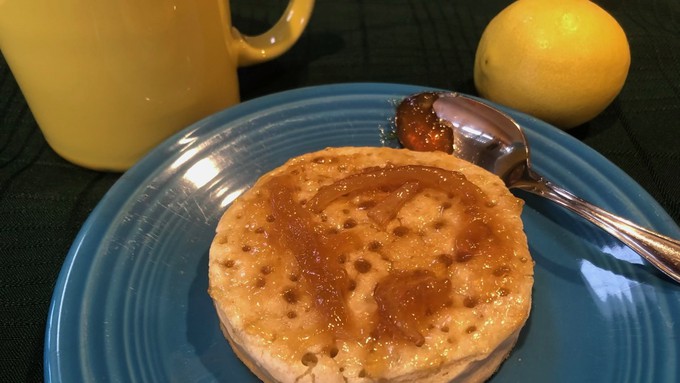
Lime marmalade is a delicious topping for a toasted crumpet or any breakfast bread. (Yes, that's a ripe lime in the background.) Kathy Morrison
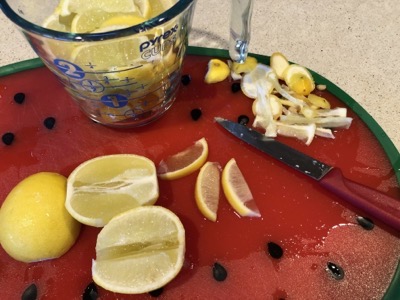
When the fruit starts picking itself, it's time to harvest -- and use -- the rest of the crop.
My little lime tree had been shedding the rest of its very ripe fruit this past week, and I had to figure out how to preserve it quickly. I didn't want to juice all the limes -- no telling when I'd get around to using that.
Then I remembered a small-batch marmalade recipe I'd made several years ago. It called for Meyer lemons and blood oranges. Surely it would work for my ripe (yellow) limes.
The beauty of this recipe is that it's strictly refrigerator preserving. No water-bath canning required. I'm an experienced tomato canner, but that's a huge, several-day event in summer. I had nowhere near enough limes for that kind of production.
I've also had little success canning jam in the past. I didn't trust it to gel so I overcooked it, turning it into a sugary glob that could rival gumdrops in texture. I finally decided to leave the jam canning to others: I have a couple good friends (including Debbie) who are excellent jam and jelly makers.
This recipe, adapted from Melissa Clark's in the New York Times, makes about 2-1/2 cups of lovely, just-tart-enough marmalade. To the second batch I added one Meyer lemon, which gave it a slightly more complex flavor. So use what you have.
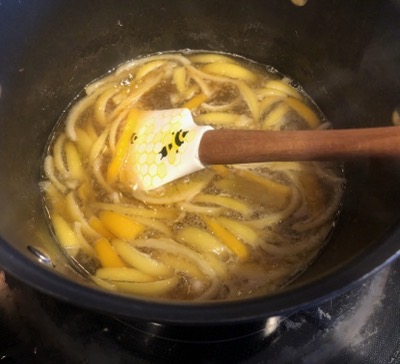
Citrus contains natural pectin, so water and sugar are the only other ingredients you need. Employ a heavy, non-stick pan and a good spatula, and use the plate test. (More on that below.)
Small-batch refrigerator lime marmalade
Makes 2-1/2 cups
Ingredients:
5 medium limes, or 4 limes and 1 Meyer lemon (or whatever citrus you have)
1-1/4 cups or less granulated sugar (superfine works well if you have it)
1-1/4 cups or less turbinado (raw) sugar
2-1/2 cups or less water
Instructions:
Place a few saucers or small plates in the freezer. Wash the citrus fruit well, and trim off the very ends. Cut each fruit in half, and cut each half into 1/8-inch slices, removing the center membrane.
Measure the fruit: This is crucial. If you have 2-1/2 cups, you're set. If not, add another lime or lemon to make 2-1/2, OR just use what you have, but adjust the amount of water and sugar to match. Example: 2 cups fruit, 2 cups water, 1 cup each of the sugars.
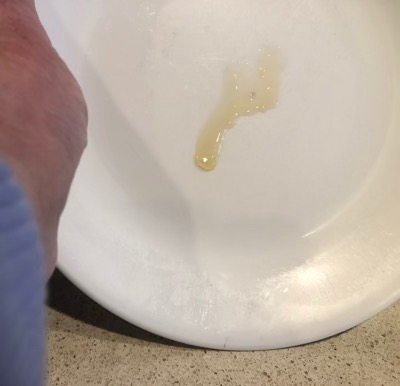
Put the fruit in a heavy-bottom pot and add the water. Bring to a boil over medium-high heat and cook for 20 to 30 minutes, stirring occasionally, until the rinds are soft and fully cooked.
Then stir in the sugar and bring the mixture back to a boil over high heat, then reduce to medium or less (depending on your stovetop) to achieve a consistent simmer.
Let the mixture simmer at least 15 minutes, stirring occasionally, before you start testing it. To test, remove one of those plates from the freezer and drop a half-spoonful or so of the hot liquid onto the plate. Let it sit for a few seconds, then tilt the plate up. If it runs, it's not ready.
Keep cooking and testing the mixture as it starts to thicken, stirring fairly often, and scraping down the sides of the pot. The marmalade could take anywhere from 15 to 35 minutes more to "set," in other words, to become soft and spreadable but not runny. The pot is hot, so the marmalade will be more liquidy there than on the plate -- trust the test. (Another tip: Look at your spatula out of the pot. If it's starting to set there, the marmalade's close to ready.) If you use a candy thermometer to test, the hot mixture should reach 222 degrees.
Remove the pot from the heat and allow the marmalade to cool to almost room
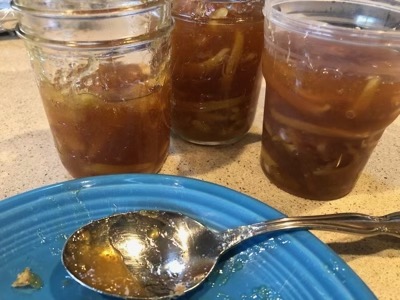
temperature before transferring it to clean jars or freezer-safe containers.
It will keep in the refrigerator about a month and at least 3 months in the freezer.
Comments
0 comments have been posted.Sacramento Digs Gardening to your inbox.
Sites We Like
Garden Checklist for week of April 21
This week there’s plenty to keep gardeners busy. With no rain in the immediate forecast, remember to irrigate any new transplants.
* Weed, weed, weed! Get them before they flower and go to seed.
* April is the last chance to plant citrus trees such as dwarf orange, lemon and kumquat. These trees also look good in landscaping and provide fresh fruit in winter.
* Smell orange blossoms? Feed citrus trees with a low dose of balanced fertilizer (such as 10-10-10) during bloom to help set fruit. Keep an eye out for ants.
* Apply slow-release fertilizer to the lawn.
* Thoroughly clean debris from the bottom of outdoor ponds or fountains.
* Spring brings a flush of rapid growth, and that means your garden is really hungry. Feed shrubs and trees with a slow-release fertilizer. Or mulch with a 1-inch layer of compost.
* Azaleas and camellias looking a little yellow? If leaves are turning yellow between the veins, give them a boost with chelated iron.
* Trim dead flowers but not leaves from spring-flowering bulbs such as daffodils and tulips. Those leaves gather energy to create next year's flowers. Also, give the bulbs a fertilizer boost after bloom.
* Pinch chrysanthemums back to 12 inches for fall flowers. Cut old stems to the ground.
* Mulch around plants to conserve moisture and control weeds.
* From seed, plant beans, beets, cantaloupes, carrots, corn, cucumbers, melons, radishes and squash.
* Plant onion sets.
* In the flower garden, plant seeds for asters, cosmos, celosia, marigolds, salvia, sunflowers and zinnias.
* Transplant petunias, zinnias, geraniums and other summer bloomers.
* Plant perennials and dahlia tubers for summer bloom.
* Mid to late April is about the last chance to plant summer bulbs, such as gladiolus and tuberous begonias.
* Transplant lettuce seedlings. Choose varieties that mature quickly such as loose leaf.